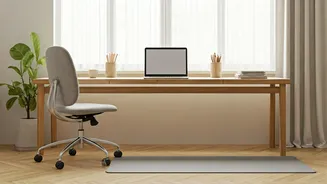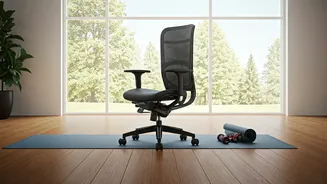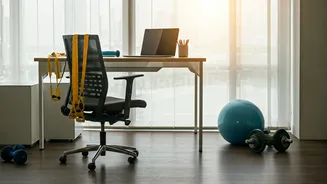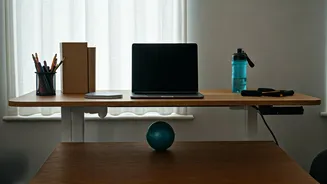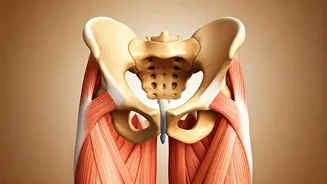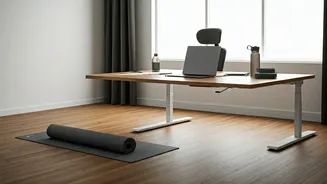The Sedentary Struggle
The modern office environment often traps individuals in prolonged periods of sitting. This sedentary lifestyle, although seemingly harmless, can be detrimental
to health. Extended sitting is linked to several issues, including poor posture, weakened muscles, and an increased risk of chronic diseases. For many, a typical workday involves hours of sitting in front of a computer, often with minimal movement. This lack of physical activity can lead to stiffness, discomfort, and a general decline in physical health. The importance of incorporating movement into the workday cannot be overstated, as it is a crucial step in mitigating these risks and improving overall well-being. Even small changes, like taking brief breaks to stretch, can make a significant difference.
Hip Strengthening Exercises
One significant consequence of prolonged sitting is the weakening of hip muscles. Fortunately, there are exercises specifically designed to counter this. One excellent option is the glute bridge. To perform this, lie on your back with your knees bent and feet flat on the floor. Lift your hips off the ground, squeezing your glutes at the top, and then slowly lower back down. Another exercise is the hip flexor stretch, which can be done by kneeling on one knee and gently leaning forward until you feel a stretch in your hip flexor. Lastly, the side leg raise is an effective way to engage the hip abductors. Lie on your side, and lift your top leg towards the ceiling. Doing these exercises, even for a few minutes daily, can significantly improve hip strength and reduce pain.
Shoulder and Back Relief
Besides hip-related issues, those with desk jobs often experience shoulder and back discomfort. Poor posture and repetitive movements can strain these areas. Several exercises can help alleviate this stress. The doorway stretch involves placing your forearms on a doorframe and gently leaning forward to stretch the chest and shoulders. Another useful exercise is the seated row. To do this, sit upright and pull your shoulder blades together as if squeezing a pencil between them. Furthermore, the desk push-up is a great way to engage the upper body without needing specialized equipment. Performing these exercises regularly can improve posture and reduce pain in the upper body, making the workday more comfortable and productive.
Neck and Eye Care
Staring at screens for extended periods can also lead to neck strain and eye fatigue. Several exercises can mitigate these issues. Neck stretches can provide relief by gently tilting your head to each side or rotating it. Eye exercises, such as the 20-20-20 rule, are essential. Every 20 minutes, look at something 20 feet away for 20 seconds. Additionally, taking regular breaks to stand up, walk around, and look away from the screen can help alleviate eye strain and promote overall well-being. These simple exercises are easy to incorporate into a workday and can significantly improve comfort and reduce fatigue.
Making it Work
Incorporating these exercises into a hectic workday may seem challenging, but it is achievable with a little planning. Setting reminders can help you remember to take breaks and exercise regularly. It's often helpful to schedule short exercise sessions throughout the day. Consider placing exercise equipment, such as resistance bands, near your desk. Moreover, consider standing up and stretching during phone calls or meetings. These proactive steps can lead to the successful integration of exercises into your work routine. Remember that even small efforts, performed consistently, will contribute to significant health benefits. The goal is to make these exercises a natural and enjoyable part of your work life.
A Holistic Approach
While exercises are crucial, a holistic approach to well-being is essential for desk workers. This includes maintaining proper posture while sitting at your desk. Make sure your chair is adjusted so that your feet are flat on the floor or supported by a footrest. Also, ensure your screen is at eye level to avoid neck strain. Drink plenty of water throughout the day. It is equally important to make smart dietary choices and to get adequate sleep. A balanced diet and sufficient rest are fundamental to maintaining overall health and energy levels. By combining regular exercise with these healthy habits, desk workers can significantly improve their physical and mental well-being and create a work life that supports long-term health.
